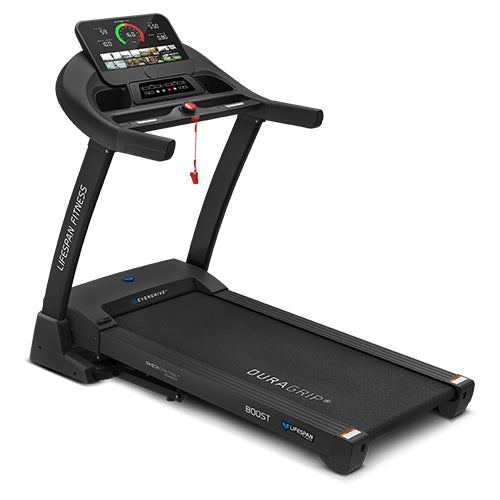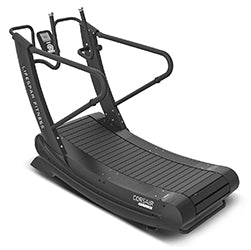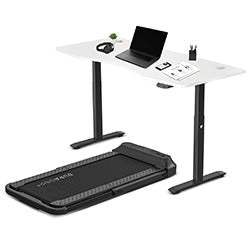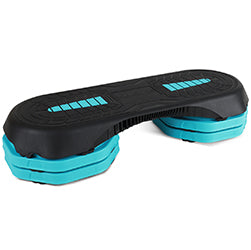

It can sometimes be hard to squeeze in a proper warmup before we get stuck into our workout. After all, it can often be hard enough to find the time in your day to even work out in the first place. And we may assume that we'll just warm up during the workout itself.
There are so many benefits to warming up but remember that it also helps you to just enjoy your workout more, getting you in the mood for exercise and in the right mindset.
This introductory guide will walk you through the benefits of warming up, common mistakes to avoid and how to effectively use your treadmill for a proper warm-up.
For more general tips on treadmill workouts, visit our blog.
The Importance of Warming Up
Benefits
You probably know by now of the importance of getting a proper warm up in, but what are the specific benefits?
The main reason we warm up is to increase blood flow to your muscles. This delivers more oxygen and nutrients to support your workout, reducing muscle stiffness and making your movements more fluid and less prone to injury.
By gradually raising your heart rate and body temperature, warming up prepares your cardiovascular system for more intense activity, boosting your overall performance.
Common mistakes
We've probably all made the mistake at some point of jumping straight into a high-intensity cardio workout...and paid the price for it.
Without a warmup, your muscles are stiff and inadequately prepared for exercise, increasing the risk of strains or sprains.
Even with a proper warmup, starting your actual workout with high intensity without gradually increasing your heart rate can completely overwhelm your body, leading to premature fatigue or injury. To avoid these issues, always incorporate a proper warm-up to prepare your muscles and cardiovascular system.
Treadmill Warm Up Routine

Here are some steps to effectively warm up on a treadmill. This will gradually increase your heart rate and prepare your body for more intense exercise:
1. Start with a Slow Walk: Begin your warm-up with a 5-minute walk at a comfortable pace. This helps ease your body into the workout, gradually increasing blood flow to your muscles and preparing your joints for movement.
2. Gradually Increase Speed: After about 5 minutes, move to a brisk walk or light jog. This should be done over the next 5-10 minutes, allowing your heart rate to rise steadily. Aim for a pace that feels slightly challenging but still manageable.
3. Incorporate Incline (Optional): If your treadmill has an incline feature, introduce a slight incline towards the end of your warm-up. This helps simulate more demanding conditions and activates different muscle groups, further preparing your body for the main workout.
4. Monitor Your Heart Rate: Pay attention to how your heart rate increases. It should rise steadily without sudden jumps, ensuring you're adequately prepared for the upcoming exercise.
Other Warm Up Methods

In addition to warming up on the treadmill, here are some other methods that can prepare you for exercise:
1. Dynamic Stretches: Start with dynamic stretches to increase flexibility and blood flow to your muscles. Try leg swings, arm circles and torso twists. These movements help loosen up your muscles and joints, reducing stiffness and improving range of motion.
2. Bodyweight Exercises: Incorporate bodyweight exercises such as lunges, squats and jumping jacks. These exercises activate various muscle groups and elevate your heart rate, simulating the physical demands of your workout. Perform each exercise for about 30 seconds to 1 minute.
3. Mobility Drills: Include mobility drills to target specific areas of your body, such as hips and shoulders. Exercises like hip circles and shoulder rolls can improve joint mobility and prepare your body for more intense movements.
4. Light Aerobic Activity: Engage in light aerobic activities like brisk walking or gentle jogging for 5-10 minutes. This gradually increases your heart rate and warms up your cardiovascular system, ensuring a smooth transition into your main workout.
Cooling Down

Now it comes time to make sure all your hard work will pay off. Cooling down after your workout is a key step for allowing your body to transition smoothly from exercise to a state of rest. It helps to gradually lower your heart rate, which prevents dizziness and improves recovery of your cardiovascular system. It can also help to reduce muscle soreness and stiffness by increasing blood flow and removing metabolic waste products from your muscles.
Cool Down Treadmill Routine
1. Slow Walk: Begin with a 5-minute slow walk at a pace significantly slower than your workout pace. This helps gradually lower your heart rate.
2. Decrease Incline: If you used an incline during your workout, gradually reduce it to a flat position.
3. Gentle Stretches: Finish with gentle stretches, focusing on the muscles used during your workout. Hold each stretch for 20-30 seconds as this gives time for blood to flow to your muscles and improve flexibility.
Conclusion

Remember that your warmup isn't just about getting your body ready for exercise, it prepares your mind as well, helping you to transition from your busy daily life and focus on your workout. Similarly, cooling down works to bring you back to your day, and makes your workout feel like less of an intrusion on your schedule.
For more information on finding the right treadmill for your space and budget, check out our guide. To understand treadmill speed in relation to real-world running, visit this helpful blog. Implementing these practices will help you make the most of your treadmill workouts, ensuring they are both effective and enjoyable.






















































